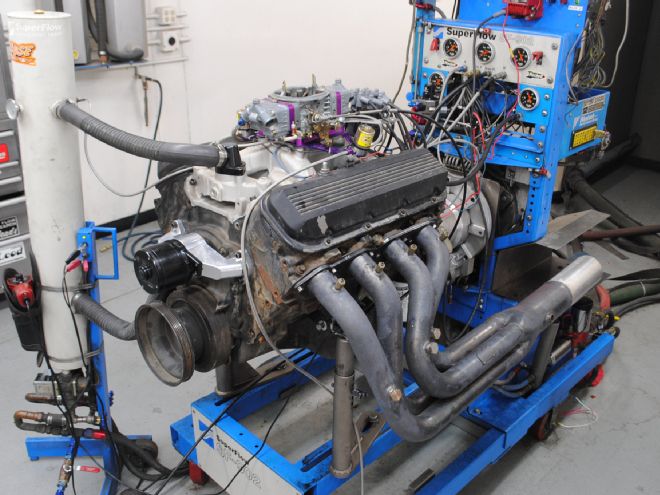
If you are a real car guy, it should downright amaze you that it is possible to drop by a local wrecking yard and pick up what is basically a complete, big-block, race engine for around $500. OK, maybe race engine is stretching the truth just a bit, but the fact remains that complete 454 Chevys are available for around $500. Not long ago they were priced the same as every other take-out engine, but someone got wise to the fact that bigger should cost more than smaller. Regardless, $500 is chump change for a complete, running big-block. Especially when said big-block pumps out over 370 hp and 480 lb-ft of torque. That’s right, the crusty, high-mileage Gen VI 454 truck engine went right from the dirt to the dyno and pumped out some impressive baseline numbers. Obviously, we have plenty of mods in store for our Big Hero (Gen) VI 454, but we decided to kick things off with the most badass, bang for the buck on the planet: nitrous oxide.
The reason we chose nitrous oxide is twofold. The primary reason is that nitrous oxide offers huge gains for relatively little money. A complete nitrous kit (like our ZEX Perimeter Plate system) can be purchased for around $600, and can add as much as 300 hp to the right combination. Given our 454’s humble beginnings, our would-be super hero received a dose equivalent to just 150 hp. For the mathematically challenged out there, this means you can step up to a ground-pounding 500hp big-block for the paltry sum of $1,100. Toss in a ton of torque and BBC Big Hero VI might just qualify as a race engine after all. In the right chassis, this power curve should push a Chevelle or Camaro well into the 11s, maybe even the 10s. The low-compression big-block will tolerate plenty of nitrous, or boost (hint, hint), yet still flawlessly perform the rigors of daily driving. Remember, this big-block was still sporting the wimpy factory cam. We will get into the specific spring, rocker, and camshaft needs of the Gen VI at a later date, but for now, know that the nitrous test was done with no internal mods.
A quick word on engine selection is in order. Though big-blocks are plenty popular, they are still available in local wrecking yards. Check out the truck and SUV sections for the best selections. Big-blocks will come in one of three different varieties, but fear not as any of them will work as a suitable race engine. In our local wrecking yards, the original Mark IV BBC was the hardest to find. These are distinguished by the presence of a mechanical fuel pump. The Gen V and Gen VI models used fuel injection so they no longer required this flange. Early Gen V engines retained this flange before they were eventually phased out. From the factory, the majority of Mark IV engines will be sporting a Q-jet carburetor, while the Gen V and VI engines came factory equipped with fuel injection. The Gen V engines we found were topped by throttle-body injection, while Big Hero VI (L29) was sporting the long-runner, multi-port fuel injection. The difference became irrelevant as we replaced the EFI with carburetion.
Here are a few things to think about when selecting a low-buck, big-block race engine from the wrecking yard. If you plan on keeping the factory heads in place, the later L29 Gen VI heads are better than the previous peanut-port head used on the Gen V. Both will require upgrading to an adjustable valvetrain, but the standard, oval-port Gen VI heads flow better than the peanut ports (at least on the intake side). Since we planned on running a carburetor, we removed the factory fuel injection. This turned out to be a mistake, as the wrecking yard charged us not for a long-block (as we hoped), but for a complete engine. In hindsight, we should have kept the injection to sell or installed a carbureted Q-jet intake and carburetor from another BBC elsewhere in the yard. If you are going to pay full price, get everything you pay for and don’t be afraid to mix and match components to tailor the BBC to your needs. The same holds true for the distributor and wires. We ditched the EFI distributor for a conventional HEI from a carbureted model. If the sale price is for a complete engine, makes sure to retain the accessory drive and flexplate. Most big-blocks are backed by a Turbo 400 or 4L80E, so if you need a solid drivetrain, snag the tranny, too.
Lucky for us, we had an intake and carburetor at our disposal in the form of an Edelbrock Performer RPM Air-Gap and Holley 750 HP. At this power level, the stock Q-jet combo would equally work well, but the ZEX kit was designed for use with a 4150 carb flange. For the baseline runs, BBC Big Hero VI was equipped with the Holley carb and Edelbrock intake along with a set of dyno headers and a fresh pan of Lucas oil. We blocked the oil passages to and from the factory oil cooler and installed a Meziere electric water pump. Since the high-mileage engine was pretty grungy, we took the liberty of giving it a quick once-over to remove the major debris prior to installation on the dyno. After filling the crankcase full of oil, we primed to the system to make sure the oil pumped worked. We spun the engine over by hand before removal from the wrecking yard, but we were happy to see 60 psi of oil pressure using the priming drill. After startup, we dialed in the timing to 35 degrees and adjusted the Percy’s Adjust-a-Jet system until the big-block pumped out 376 hp at 4,500 rpm and 482 lb-ft of torque at 3,500 rpm. Those numbers may not seem like much for a big block, but the sheer fact that it was running on eight holes made it more than worth the $500 we spent.
With smiles all around, we set out to crank up the power with the ZEX Perimeter Plate nitrous system. More than just supplying nitrous and fuel, the ZEX kit offered a few unique design features, including Perimeter Injection, Cryo-Sync, and Airflow Enhancement Technology. Compared to a traditional spray-bar, plate system, the Perimeter Injection system employs 12 (equidistant) injection points that combined nitrous and fuel to optimize both atomization (very important) and distribution in the manifold. The side benefit of injecting the super-cool (-127 degrees) nitrous is that the Perimeter Plate (sandwiched between the carb and intake) effectively turned it into a Cryo-Sync (or heat isolator). This isolator helped cool both the intake and carburetor. As a final bonus, the high-pressure flow of nitrous and fuel through the plate also created a low-pressure zone to further enhance airflow.
With the 454 still warm from the baseline pull, we installed the ZEX Perimeter Plate system. The kit was adjustable from 100-300 hp, but we configured the plate with jetting to provide an extra 150 hp. We set the fuel pressure for the nitrous system to 5 psi then made sure to get the bottle pressure up above 900 psi. External bottle temperatures were taken using an infrared heat gun. All testing was run on 91-octane pump gas so we retarded the total ignition timing by 7 degrees, just to be safe. After purging the system, we let the hammer fly. True to form, the ZEX Perimeter Plate system pumped up BBC Big Hero VI to the tune of 529 hp and 662 lb-ft of torque. These were the peak numbers that occurred after first engaging the system, but the graph illustrates that the $500 big-block easily exceeded 500 hp with the ZEX kit. In case you weren’t following along, the math is easy. Junkyard Gen VI BBC plus ZEX nitrous equal 500hp Big Hero.
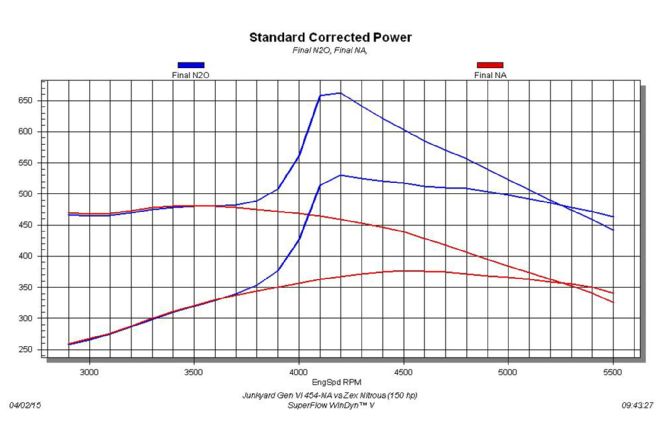
Fullsize Chevy trucks required lots of torque and that is exactly what this L29 454 offered. Fresh from the junkyard, we equipped it with an Edelbrock Performer RPM Air-Gap intake, 750 HP Holley carb, and MSD distributor. Equipped as such, the Gen VI BBC produced 376 hp at 4,500 rpm and 482 lb-ft of torque at 3,500 rpm. After adding the ZEX Perimeter Plate nitrous system, the peak numbers jumped to 529 hp and 662 lb-ft of torque. Who said performance engines can’t be cheap and effective?
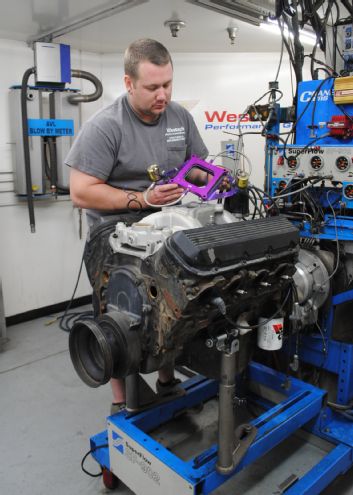
1. All it took to create BBC Big Hero VI was a junkyard engine and juice.
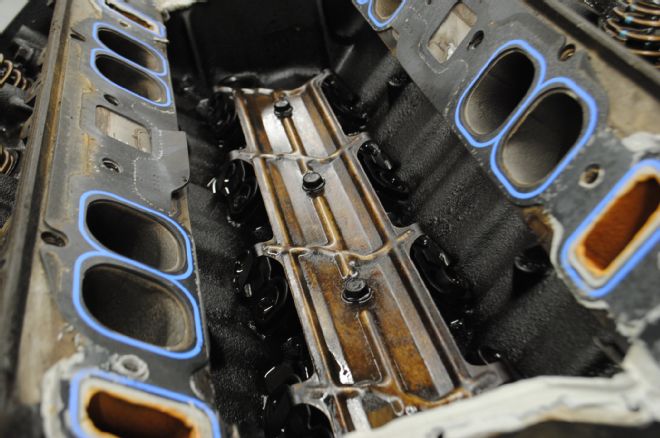
2. Though dirty and in need of an oil change, the high-mileage, Gen VI 454 was sporting large oval-port heads and the factory hydraulic roller cam valvetrain.
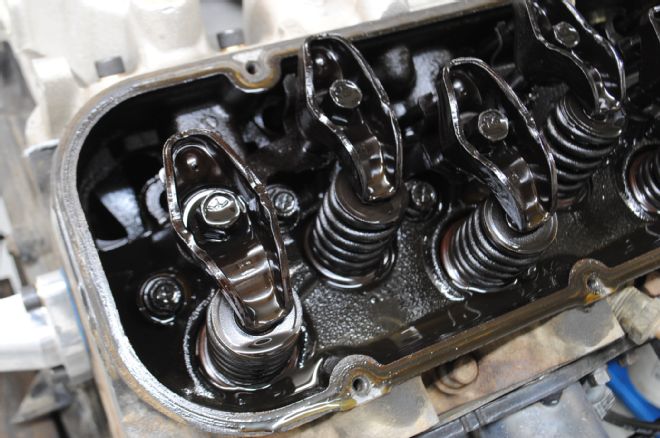
3. The late-model big-block was equipped with a non-adjustable valvetrain and stamped steel rocker arms.
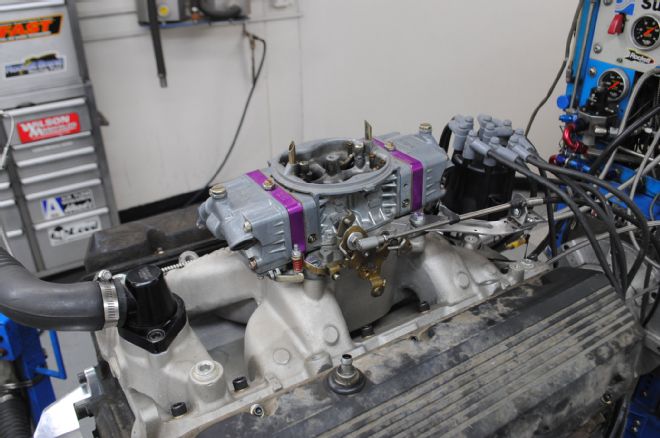
4. The original EFI induction system was replaced with this Edelbrock Performer RPM Air-Gap manifold and Holley 750 HP carburetor. Simple and effective, the intake combo had the potential to grow with our power needs.
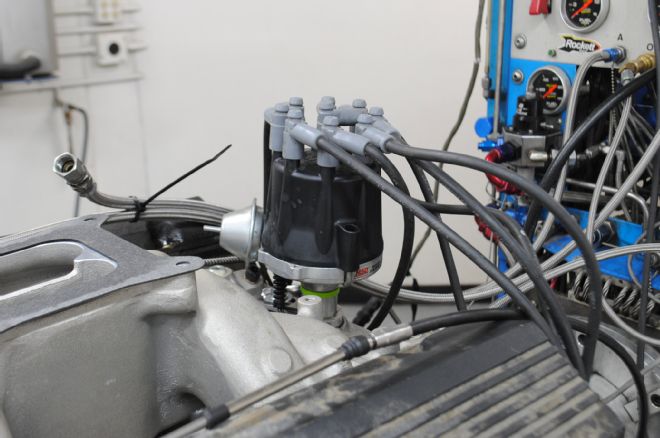
5. Though the (carbureted BBC) HEI that came with the engine was likely sufficient, we stepped up to an MSD billet distributor. The dyno ignition system also featured an MSD 6AL ignition amplifier.
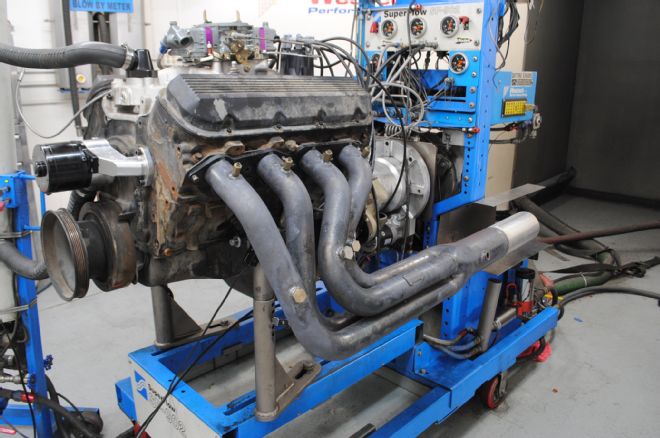
6. All testing was run with a set of 2 1/8-inch dyno headers.
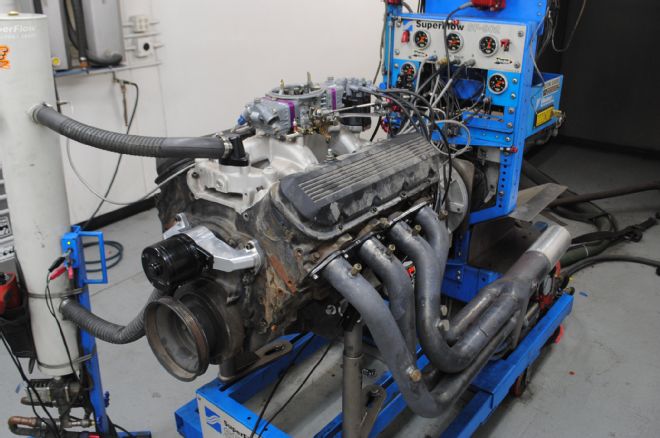
7. Run with the Edelbrock/Holley induction system and dyno headers, the Gen VI BBC produced 376 hp and 482 lb-ft of torque.
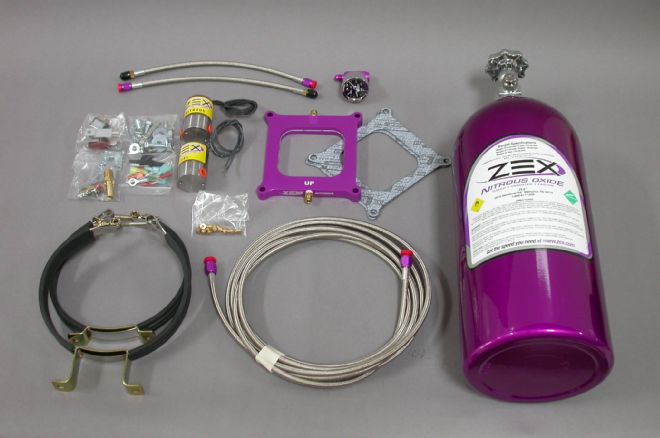
8. The super soldier formula for our big hero came in the form of this ZEX Perimeter Plate nitrous system.
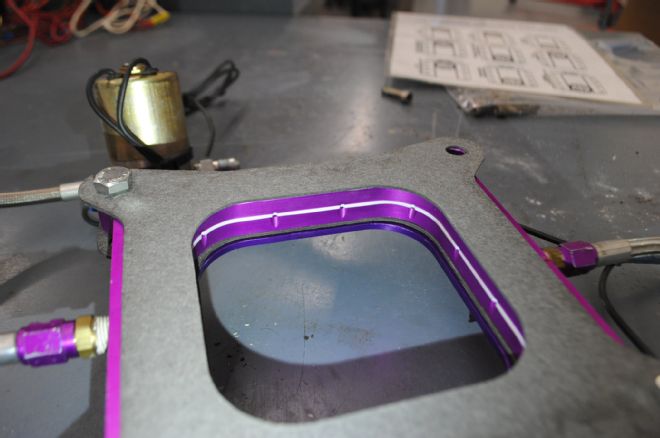
9. The ZEX kit featured a perimeter plate that supplied nitrous and fuel through 12 equidistant injection points.
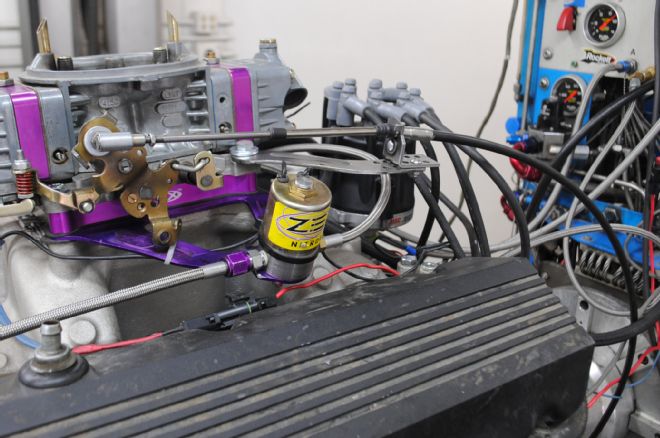
10. The fuel and nitrous were supplied by individual solenoids. Activation of the solenoids allowed nitrous and fuel to flow to the perimeter plate.
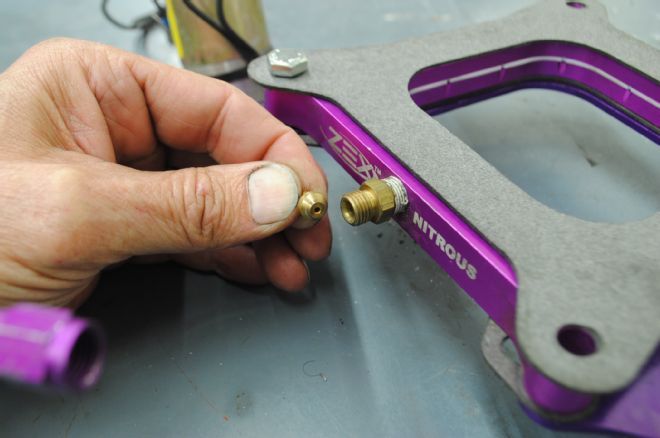
11. The power supplied by the ZEX kit was adjustable from 100-300 hp using the supplied jetting.
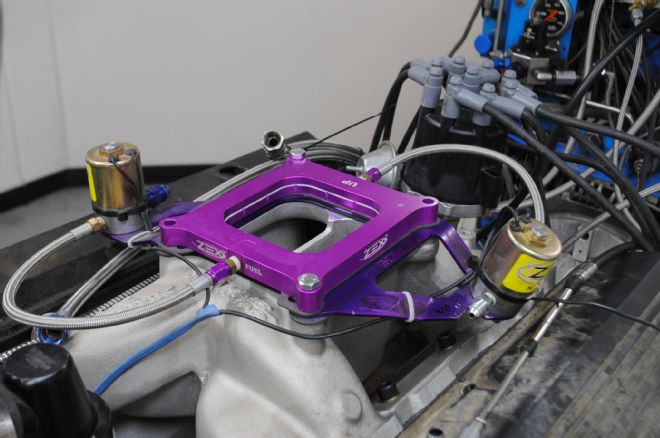
12. After running the naturally aspirated baseline, we installed the solenoids, jets, and perimeter plate onto the awaiting intake.
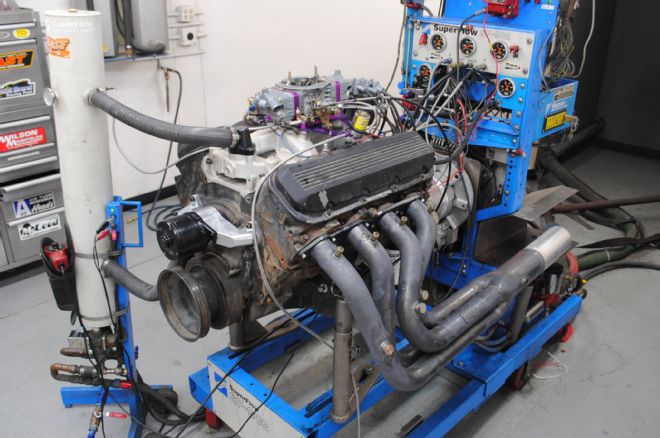
13. Equipped with the ZEX kit, the power output of BBC Big Hero VI jumped from 529 hp and 662 lb-ft. That ZEX stuff is some serious super soldier formula.